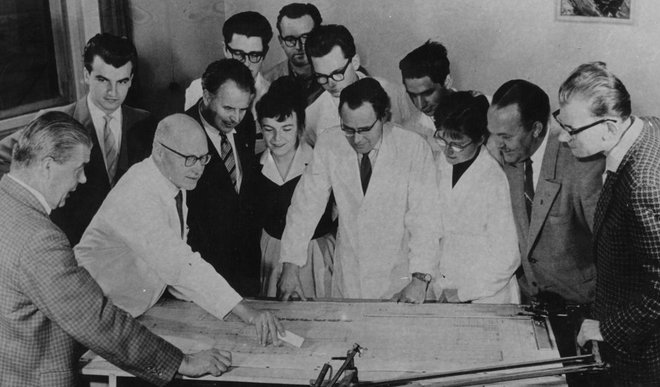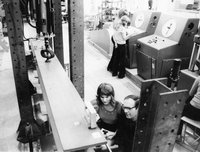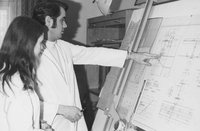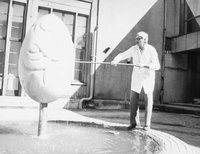
History and profile
Although the history of the Faculty of Civil Engineering only began in 1953, its roots go back much further to the mid-19th century. In 1860 the Grand Ducal Academy of Fine Arts was founded the school that would eventually become the Bauhaus-Universität Weimar.
The art academy specialized in educating painters and, beginning in 1905, sculptors as well. In 1910 the school was reformed as the Grand Ducal Saxon College for the Fine Arts. In 1902 the Belgian artist Henry van de Velde was appointed director of the School of Arts and Crafts. Several buildings were constructed between 1904 and 1911 to house these two schools. Although both were added to the list of UNESCO World Heritage Sites in 1996, parts of them are still used by the university today.
In 1919 the Berlin architect Walter Gropius founded the State Bauhaus. The goal of the Bauhaus was to unite art and technology, and combine aesthetic design with industrial mass production. The Bauhaus philosophy and works strongly influenced 20th-century architecture around the world.
founding years and first steps
In 1925 the Bauhaus was forced to leave Weimar for political reasons. The college that remained behind underwent several reforms in the following years. After World War II the school was re-established as the College of Architecture and Fine Arts in 1946. With the addition of the Faculty of Civil Engineering (1953) and Architecture, the college received a rectorial constitution and was renamed the College of Architecture and Civil Engineering in 1954. In 1969 the Faculty of Regional and Urban Planning was formed from the faculties of Civil Engineering and Architecture. In that same year, the Faculty of Computer Technology and Data Processing was also established. This laid the foundation for a mainly technically oriented College of Architecture and Civil Engineering which produced generations of architects, regional and urban planners, civil engineers, computer scientists and building materials processing engineers until the early 1990s.
With the expansion of its technical components, the college comprised five sections (faculties) in 1990/1991, i.e. Architecture, Civil Engineering, Building Materials Processing Technology, Computer Technology and Data Processing, and Regional Planning and Urban Development.
The Faculty of Civil Engineering offered academic courses in Structural Engineering and Municipal Underground Engineering. These programmes strongly emphasized Constructive Civil Engineering, which served as the basis for the creation of a research facility for industrial and specialized construction.
The Faculty of Building Material Processing Technology was the only one of its kind in Germany and its graduates were in high demand in the cement and concrete industries. HHdIn addition to heavy ceramics, concrete, plaster and glass, the faculty also offered instruction in other specialized fields that were not directly related to civil engineering, e.g. ultra-fine ceramics for the electronics industry.
The Faculty of Computer Technology and Data Processing had already begun offering instruction in Applied Computer Science in 1965 as part of the basic study phase in the Civil Engineering programme. At the time, such instruction represented a pioneering effort.



The ninties - Time for structural change
After a period of extensive reform between 1991 and 1996, the Bauhaus-Universität Weimar restructured itself with faculties of Architecture, Urban and Regional Planning, Civil Engineering, Art and Design, and Media.
The chairs of the former faculties of Building Materials Processing Technology, Regional Planning and Urban Development, and Computer Technology and Data Processing were incorporated into the Faculties of Civil Engineering and Architecture/Urban and Regional Planning. Signalling a return to the artistic traditions of the Bauhaus period, the university established the Faculties of Art and Design (1993) and Media (1996).
On account of the special structure of the Bauhaus-Universität Weimar, the Faculty of Civil Engineering not only corresponds to the classic profile of a civil engineering department, but also includes chairs in the areas of Mathematics, Information Technology, Natural Sciences, Environmental Technology, Traffic Planning and Process Engineering.
Over the course of its 50-year history, a long line of outstanding scholars and university instructors have shaped the Faculty of Civil Engineering and enhanced its reputation in academics and research. Several of these renowned individuals include the professors Heinrich Zeidler (founding dean), Friedrich August Finger, Friedrich Hagedorn, Gustav Batereau, Horst Matzke, Hermann Reinicke, Wilhelm von Wölfel and Erhard Hampe.




